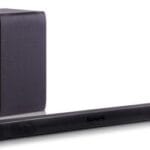Has a recent power outage left your water softener acting up? You’re not alone.
Many homeowners face this issue, and it can be frustrating. But don’t worry; resetting your water softener is easier than you might think. Imagine enjoying the benefits of soft water again—better lather, softer clothes, and no more mineral buildup. This guide will walk you through the process step by step, ensuring that your home’s water quality returns to its best.
By the end of this article, you’ll feel empowered and ready to tackle the reset with confidence. Let’s get started and bring back the comfort of soft water to your home!

Credit: dropconnect.com
Importance Of Resetting Water Softener
Resetting your water softener after a power outage is crucial. It ensures the unit functions correctly. Without resetting, the softener might not work properly. Hard water can return and cause issues in your home. Mineral deposits can build up in pipes and appliances. This can lead to costly repairs and replacements. Resetting prevents these problems and maintains soft water. Soft water is essential for clean clothes and dishes. It also helps keep your skin and hair healthy.
Why Hard Water Is A Concern
Hard water contains high mineral content. These minerals include calcium and magnesium. They can damage your plumbing system. They also reduce the efficiency of water heaters. Hard water affects appliances like dishwashers and washing machines. It can leave spots on dishes and glasses. Clothes may feel rough and lose color. Skin can become dry and irritated. Hair may feel dull and lifeless. Resetting your water softener helps avoid these issues.
Benefits Of Soft Water
Soft water is free from heavy minerals. It extends the life of appliances and plumbing. It reduces energy consumption in water heaters. Soft water keeps clothes looking bright and fresh. It provides a smoother feel on skin and hair. It reduces soap and detergent usage. Cleaning becomes easier and more effective. Dishes and glassware shine without spots.
Impact On Home Maintenance
Using soft water simplifies home maintenance. It prevents scale buildup in pipes. This reduces the need for repairs. Soft water protects household appliances. It increases their lifespan significantly. It prevents mineral deposits in sinks and tubs. Cleaning becomes less frequent and easier. Soft water saves time and money on maintenance.

Credit: waterestore.ca
Identifying The Need For Reset
Resetting a water softener after a power outage is crucial. Sometimes, it might not work properly without a reset. Identifying the need for a reset can save time and prevent issues. Knowing the signs can help maintain its efficiency.
Signs Of Malfunction
Is your water still hard after using the softener? This is a sign of malfunction. Are the dishes spotty even after washing? Another red flag. A malfunction might cause the system to use more salt than usual. Listen for unusual noises coming from the unit. These signs indicate the softener needs attention.
Impact Of Power Outage
Power outages disrupt the softener’s settings. The system might lose its programmed cycles. Incorrect settings can lead to hard water flow. The unit may not regenerate properly. A reset helps restore the settings. Without it, your system might not function optimally.
Preparation Before Resetting
Resetting a water softener after a power outage can seem daunting. With the right preparation, the process becomes straightforward. Proper planning ensures a smooth reset, safeguarding your equipment and extending its lifespan.
Gather Necessary Tools
Start by collecting all the essential tools. You need a user manual, a flashlight, and a screwdriver. The user manual provides guidance specific to your model. A flashlight helps illuminate dark spaces, especially in basements. A screwdriver might be necessary for accessing panels or compartments.
Safety Precautions
Prioritize safety before beginning any reset process. Ensure the water softener is unplugged to prevent electrical shocks. Wear rubber gloves to protect your hands from any chemicals. Check the area for water leaks or spills. Wet floors can cause slips and falls. Make sure the workspace is dry and well-lit.
Step-by-step Reset Process
Resetting a water softener after a power outage involves a simple step-by-step process. First, check the timer settings. Then, ensure the regeneration cycle is correctly scheduled. Lastly, confirm salt levels in the brine tank. Following these steps can restore your water softener’s efficiency quickly.
Resetting your water softener after a power outage may seem daunting, but with this step-by-step process, you’ll have it up and running smoothly in no time. If you’ve ever faced the inconvenience of hard water deposits after a power cut, you know the urgency of restoring your water softener’s settings. Dive into these straightforward steps to ensure your system is functioning optimally.Locate The Control Panel
The control panel is the brain of your water softener. It’s usually found on top or the side of the softener unit. Check your user manual if you’re unsure of its location. Once you’ve found it, inspect the panel for any error messages. This helps you understand if there’s a specific issue that needs attention. Do you remember the last time you had to reset a device? Finding the control panel is much like that initial step—vital and straightforward.Reprogram Settings
After locating the control panel, the next step is to reprogram your settings. This typically involves setting the current time and adjusting the hardness level. Most water softeners have user-friendly digital displays. Input the current time and ensure the hardness setting matches your water supply’s needs. Imagine inputting the time on your microwave or adjusting your alarm clock. It’s that simple but crucial for accurate operation.Manual Regeneration
Once your settings are reprogrammed, it’s time for manual regeneration. This process flushes out the hard water minerals, resetting the softener’s resin beads. Look for a “Regenerate” button on your control panel. Press it to start the cycle, and wait for the softener to complete its process. Have you ever manually refreshed your computer or phone? Manual regeneration is like refreshing your water softener, ensuring it’s ready to deliver soft water. By following these steps, you ensure your water softener is reset and functioning at its best. Remember, a well-maintained water softener not only protects your appliances but also provides you with the comfort of soft, clean water. What steps do you take to ensure your home systems are always in top shape?Troubleshooting Common Issues
Resetting a water softener after a power outage is simple. Check the control panel for error codes. Follow the manual’s instructions to reprogram settings, and ensure the time and regeneration schedule are correct.
Resetting your water softener after a power outage can sometimes feel like solving a mystery. You plug it back in, hoping it works seamlessly, but that’s not always the case. If it displays error codes or behaves oddly, don’t worry. You’re not alone, and often, these issues are easier to fix than they seem. Let’s delve into some common problems and how to tackle them effectively.Error Codes Explained
When your water softener flashes an error code, it’s trying to communicate with you. These codes can vary depending on the brand and model. E1 might indicate a problem with the motor or control board. A quick reset might clear this. E2 could mean there’s an issue with the water flow. Check for blockages in the pipes or valves. Your user manual often holds the key to deciphering these codes. Keep it handy for reference. If you don’t have a physical copy, many manufacturers offer downloadable versions online.When To Seek Professional Help
Sometimes, despite your best efforts, the problem persists. When should you consider calling in the experts? If the error codes remain after a reset, or the softener doesn’t run its cycle, it might be time for professional assistance. Unusual noises or leaks can be signs of internal mechanical issues. Attempting to fix these without proper knowledge can lead to more damage. Have you encountered frequent power outages leading to repeated issues? This might be an indicator of a more significant electrical problem that needs a professional eye. How do you decide when to DIY or to dial a professional? Trust your instincts and consider your comfort level with handling such repairs. Your safety and the longevity of your appliance are important.
Credit: www.tiktok.com
Maintaining Water Softener Efficiency
Resetting your water softener after a power outage ensures its efficiency. Start by checking the display panel for errors. Reconfigure the settings to match your water hardness level.
Maintaining Water Softener Efficiency Keeping your water softener running smoothly is crucial for ensuring your home has a consistent supply of soft water. A power outage can disrupt this, but with a few steps, you can reset and maintain your water softener’s efficiency. This process not only protects your appliance but also enhances its longevity and performance.Regular Maintenance Tips
Regular maintenance is the key to a well-functioning water softener. Start by checking the salt levels in the brine tank monthly. Low salt can reduce the softening ability of your unit. Clean the brine tank every six months. Over time, salt can form a crust inside the tank, affecting performance. Use warm water and soap for a thorough clean. Examine the valve settings. A power outage might reset them to default. Adjust as needed to match your home’s water usage.Preventive Measures
Prevention is better than cure, even for water softeners. Install a surge protector to guard against electrical spikes. This protects the softener’s electronic components during outages. Consider having a backup power source. A small UPS can keep your softener running through brief outages. Think about how much smoother your life would be without interruptions. Regularly check for leaks or blockages in the system. Early detection can prevent costly repairs. Don’t wait until your water turns hard again to take action. Have you ever noticed how much effort you put into maintaining other home appliances? Your water softener deserves the same attention. Following these guidelines can save you from unexpected hassles and ensure your water stays soft and your appliances last longer.Frequently Asked Questions
How Do I Reset My Water Softener After A Power Outage?
Press the reset button or unplug the unit. Check the manual for specific instructions.
Why Does A Power Outage Affect Water Softeners?
Power outages reset electronic settings. Manual adjustments may be needed to restore proper function.
Can Resetting Fix All Water Softener Issues?
Resetting solves many issues but not all. Persistent problems may need professional service or a detailed check.
Do All Water Softeners Have A Reset Button?
Most modern units have reset options. Older models might require manual resetting. Check your manual for details.
Is It Safe To Reset My Water Softener Myself?
Yes, it is generally safe. Follow the manufacturer’s instructions to avoid damage or incorrect settings.
Conclusion
Resetting your water softener after a power outage is simple. First, check the manual for specific instructions. Next, unplug the unit for a few minutes. Then, plug it back in and reset the settings. Make sure the time is correct.
This helps in proper regeneration. Regular maintenance ensures your softener works efficiently. It saves you from hard water problems. So, spend a few minutes resetting it. Enjoy soft water without hassles. Always be prepared for the next power outage. Keep your home running smoothly.




